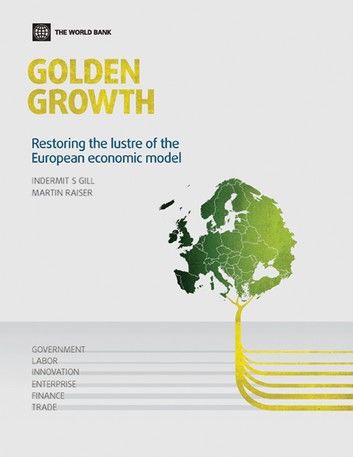| FindBook |
有 1 項符合
Golden Growth: Restoring the Lustre of the European Economic Model的圖書 |
 |
Golden Growth: Restoring the Lustre of the European Economic Model 作者:Indermit S. Gill,Martin Raiser 出版社:World Bank Publications 出版日期:2012-04-27 語言:英文 |
| 圖書館借閱 |
| 國家圖書館 | 全國圖書書目資訊網 | 國立公共資訊圖書館 | 電子書服務平台 | MetaCat 跨館整合查詢 |
| 臺北市立圖書館 | 新北市立圖書館 | 基隆市公共圖書館 | 桃園市立圖書館 | 新竹縣公共圖書館 |
| 苗栗縣立圖書館 | 臺中市立圖書館 | 彰化縣公共圖書館 | 南投縣文化局 | 雲林縣公共圖書館 |
| 嘉義縣圖書館 | 臺南市立圖書館 | 高雄市立圖書館 | 屏東縣公共圖書館 | 宜蘭縣公共圖書館 |
| 花蓮縣文化局 | 臺東縣文化處 |
|
|
圖書介紹 - 資料來源:樂天KOBO 評分:
圖書名稱:Golden Growth: Restoring the Lustre of the European Economic Model
The public debt crisis in Europe has shaken the confidence not just in the Euro, but in the European model. Aging and uneconomical Europeans are being squeezed between innovative Americans and efficient Asians, it is said. With debt and demographics dragging down them down, one hears that European economies will not grow much unless radically new ways are discovered. The end of complacency in Europe is a good thing, but this loss of confidence could be dangerous. The danger is that in a rush to rejuvenate growth, the attractive attributes of the European development model could be abandoned along with the weak. In fact, the European growth model has many strong points and enviable accomplishments. One can say without exaggeration that Europe had invented a “convergence machine”, taking in poor countries and helping them become high income economies. World Bank research has identified 27 countries that have grown from middle-income to high income since 1987: a few thanks to the discovery and exploitation of massive natural resources (e.g.: oil in Oman and Trinidad and Tobago), several others like Japan, Hong Kong, Singapore, Taiwan, and South Korea, embracing aggressive export-led strategies which involved working and saving a lot, postponing political liberties, and looking out only for themselves. But half of the countries that have grown from middle income to high income—Croatia, Cyprus, Czech Republic, Estonia, Greece, Hungary, Latvia, Malta, Poland, Portugal, Slovak Republic, and Slovenia—are actually in Europe. This is why the European model was so attractive and unique, and why with some well designed efforts it ought to be made right again.
|










